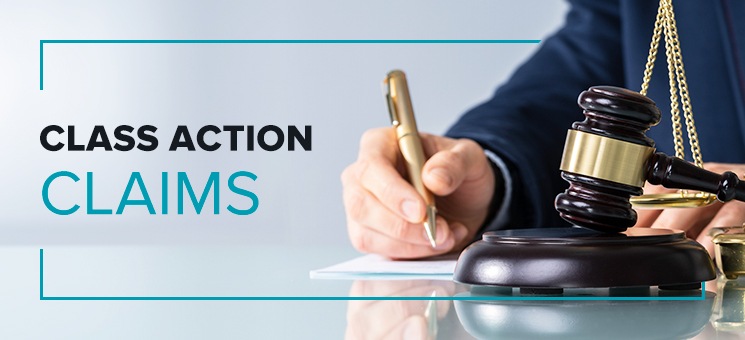Assertio Class Action Lawsuit Breakdown: Your Legal Companion
Assertio Class Action Lawsuit Breakdown: Your Legal Companion
Blog Article
Demystifying Course Action Legal Actions: A Closer Take A Look At Legal Proceedings
Class activity suits can be challenging and intricate, often shrouded in a shroud of mystery for those unfamiliar with the lawful process entailed. Nonetheless, obtaining a deeper understanding of these lawsuits is crucial, as they work as a powerful tool for individuals to seek justice and hold firms accountable. In this conversation, we will certainly debunk course activity lawsuits, taking a more detailed look at the numerous facets of the legal procedures. From comprehending the requirements for course action qualification to the role of class representatives, and from the procedure of course accreditation to the resolution of these legal actions, we will certainly decipher the details and dropped light on the internal functions of this legal device. Let's dive right into the globe of course activity claims and uncover the intricacies that exist beneath the surface area.
Comprehending Class Action Legal Actions
Comprehending Course Action Suit needs a thorough assessment of the lawful proceedings associated with cumulative litigation. Class action suits are a kind of lawsuit where a group of individuals with similar insurance claims or grievances collaborate to launch a lawsuit against an usual offender. This form of lawsuits enables people with restricted resources to collectively seek justice, as it incorporates the toughness of several private insurance claims right into a single legal activity.
The process starts with the identification of a lead plaintiff or class rep who submits the preliminary complaint on behalf of the entire course. The court then establishes whether the instance meets the needs for course qualification, that include commonness, numerosity, typicality, and competence of depiction. If accredited, the court alerts possible course participants, providing them a chance to opt-out if they want to pursue their insurance claims separately.
Once the class is accredited, the lawsuits continues through various stages, consisting of exploration, movement technique, and, if needed, test. The result of the legal action can lead to a judgment or a negotiation, which is binding on all course participants unless they choose to opt-out. Course activity claims can include a large variety of lawful problems, such as consumer security, safety and securities fraudulence, work discrimination, and environmental damage.
Recognizing the subtleties of course action suits is important for both accuseds and complainants involved in cumulative litigation. It calls for a complete understanding of the legal demands for qualification, the rights and responsibilities of class participants, and the potential benefits and risks linked with pursuing or defending versus course action claims.
Identifying Class Activity Qualification
To establish whether a lawful activity certifies as a course action lawsuit, specific requirements should be met. These criteria are made to make sure that the case can appropriately stand for the passions of a large team of people who have actually endured comparable injury or have actually been impacted by the very same concern. The crucial element in determining course action qualification is the visibility of a common question or concern that affects all possible class members.
To start with, a class action legal action needs numerosity, which implies there have to be a substantial number of potential course participants included. This guarantees that a class activity is a reliable way to settle the claims of a big group of individuals, instead of having each individual file a private legal action.
Second of all, there need to be commonness amongst the cases of the potential course participants. This suggests that there should be a common concern of legislation or truth that is central to the instance. A class activity may not be proper. if each prospective course participant's claim is unassociated and distinct to the others.

The Role of Class Representatives
Class representatives play an essential duty in course action lawsuits by standing for the interests of the entire course. These individuals are selected from within the course to work as the public face of the lawsuit and are accountable for choosing in support of all class participants. The role of class representatives entails different responsibilities and tasks throughout the lawful proceedings.
One of the key obligations of class reps is to offer information and help to their fellow class participants. They offer as a point of call and communication between the class members and the lawyers representing them. This includes keeping the course members educated around crucial updates, addressing their concerns, and dealing with any kind of problems they might have.
Course agents likewise have the responsibility to actively take part in the lawsuits process (Future FinTech class action lawsuit). This involves functioning very closely with the lawyers to develop lawful methods, gathering evidence, and giving statement if necessary. They have to be proactively involved in all aspects of the situation to guarantee that the very best passions of the entire class are stood for
Additionally, class reps are accountable for approving negotiations or other resolutions gotten to in the suit. They must meticulously evaluate the regards to the negotiation and choose that is in the most effective passion of the whole course. This decision-making process requires careful factor to consider and appointment with the course members.
The Refine of Class Certification
The procedure of licensing a class in a class activity suit entails a thorough analysis of certain requirements to figure out if the case satisfies the necessary needs for class qualification. Class qualification is a critical action in the lawsuits procedure as it figures out whether a suit can continue as a class activity, allowing a big team of individuals with comparable cases to be represented jointly by one or a few people.
To obtain course qualification, the complainant has to show that the suggested class satisfies certain prerequisites. Typicality requires that the cases or defenses of the course reps are normal of those of the class. Adequacy of representation guarantees that the class representatives will fairly find out this here and adequately protect the rate of interests of the class.
The court will certainly scrutinize these standards and the plaintiff's evidence to establish if the recommended course satisfies the required requirements. The court may also take into consideration other factors, such as whether a course action is the superior approach to solve the conflict and whether the class is completely cohesive.

As soon as the court gives course accreditation, the suit can proceed as a class action, permitting the complainants to jointly seek relief and possibly receive a judgment or settlement that profits the whole course.
Managing Class Activity Lawsuits
Once course qualification has actually been approved, the next action in dealing with a course activity claim is to navigate the process of litigation or negotiation arrangements. Litigation refers to the lawful proceedings in court, where the complainant's lawyer provides evidence and arguments to sustain their claims, and the offender's lawyer counters with their own evidence and debates. This process can entail different phases, such see this as pretrial movements, discovery, and test. During pretrial movements, both parties might file activities to reject the instance or narrow down the issues in opinion. Discovery enables each side to collect evidence and details from the other event through techniques such as document interrogatories, depositions, and demands. Ultimately, if the instance proceeds to trial, both parties offer their situation prior to a judge or court, who will certainly then make a decision the result.
On the other hand, settlement negotiations involve discussions in between the events to reach a mutually appropriate resolution without going to trial. Settlement supplies might be made at any phase of the lawsuits process, and if both events concur, a settlement arrangement is gotten to.
Conclusion
To conclude, course action lawsuits play a crucial duty in supplying justice and compensation to huge groups of people that have been harmed by the exact same entity. By certifying a class and assigning course representatives, the legal process comes to be extra obtainable and effective for the plaintiffs. Resolving these claims can be a complicated and lengthy process, yet it is necessary in holding companies responsible for their activities and guaranteeing reasonable results for all affected events.
From understanding the standards for class activity qualification to the role of course reps, and from the process of course certification to the resolution of these legal actions, we will unravel the details and dropped light on the internal operations of this legal mechanism. The vital aspect in identifying class activity qualification is the existence of an usual concern or issue that influences all potential course members.
If each prospective course member's case is distinct and unrelated to the others, a class activity may not be ideal.
Class agents play an essential duty in course action legal actions by representing the interests of the entire class.When course certification has been approved, the following action in fixing a course activity suit is to browse the procedure of litigation or settlement negotiations.
Report this page